How to Buy Pearl Jewelry: Assess High Quality Pearls
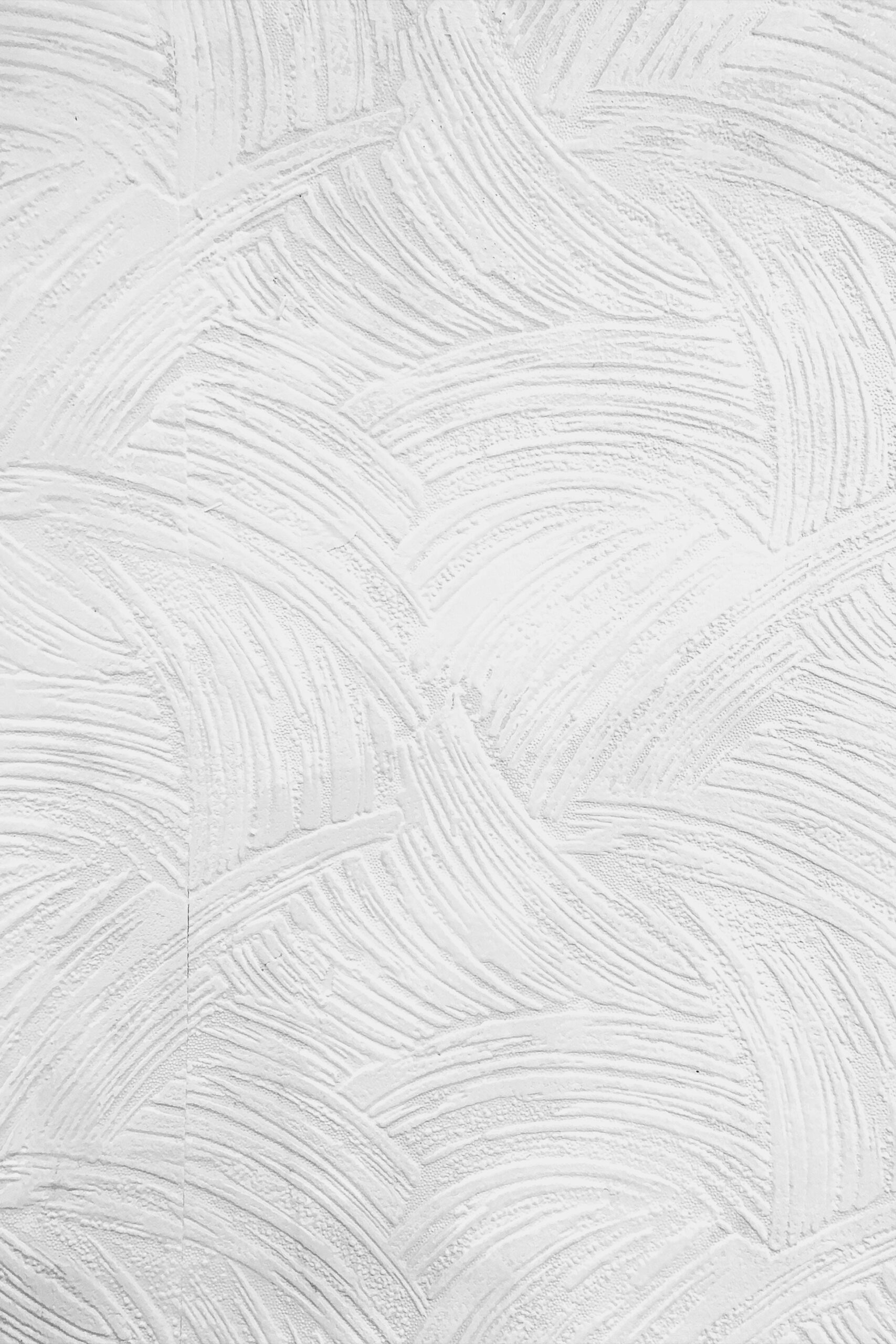
A Complete Buyer’s Guide on How to Buy Pearl Jewelry
The following guide will discuss how to buy pearl jewelry. Pearls have been renowned for their status as a symbol of refinement and wealth for millennia.
However, before embarking on buying pearl earrings, it is imperative to first gain a comprehensive understanding of pearl terminology. This will enable you to differentiate between natural and cultured pearls, varieties of pearls, and their quality, particularly with respect to their lustre, nacre and surface quality. You can then be empowered to select the perfect pearl jewelry that harmonises with your individual style.

Natural Pearls vs. Cultured Pearls
When learning how to buy pearl jewelry it is important to firstly mark the difference between the two main classifications of pearls: natural (wild) pearls, and cultured pearls.
Natural Pearls
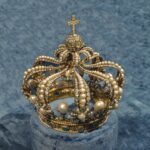
Cultured pearls are real pearls formed following a similar process to natural pearls but involve human intervention on pearl farms. The five stages of cultured pearl production include oyster selection, nucleus implanting, nurturing, harvesting and then pearl processing, which involves nucleus implantation. A tissue graft is inserted from a donor mollusc, which initiates the formation of layers of nacre.
Cultured pearls make up over 95-99 per cent of pearls sold worldwide. Chinese pearl production comprises 90-98 per cent of global cultured pearl production. The price of freshwater pearls ranges greatly, depending on the environment in which it is cultured.
Cultured Pearls
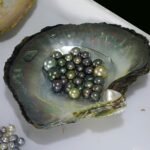
Cultured pearls are real pearls formed following a similar process to natural pearls but involve human intervention on pearl farms. The five stages of cultured pearl production include oyster selection, nucleus implanting, nurturing, harvesting and then pearl processing, which involves nucleus implantation. A tissue graft is inserted from a donor mollusc, which initiates the formation of layers of nacre.
Cultured pearls make up over 95-99 per cent of pearls sold worldwide. Chinese pearl production comprises 90-98 per cent of global cultured pearl production. The price of freshwater pearls ranges greatly, depending on the environment in which it is cultured.

Saltwater Pearls vs. Freshwater Pearls
The primary determinant of cultured pearl quality is the type of environment in which the host mollusc is grown. Thus, both natural and cultured pearls can be subdivided into saltwater pearls or freshwater pearls. Knowing the difference in quality of each variety will help in your endeavours in how to buy pearl jewelry.
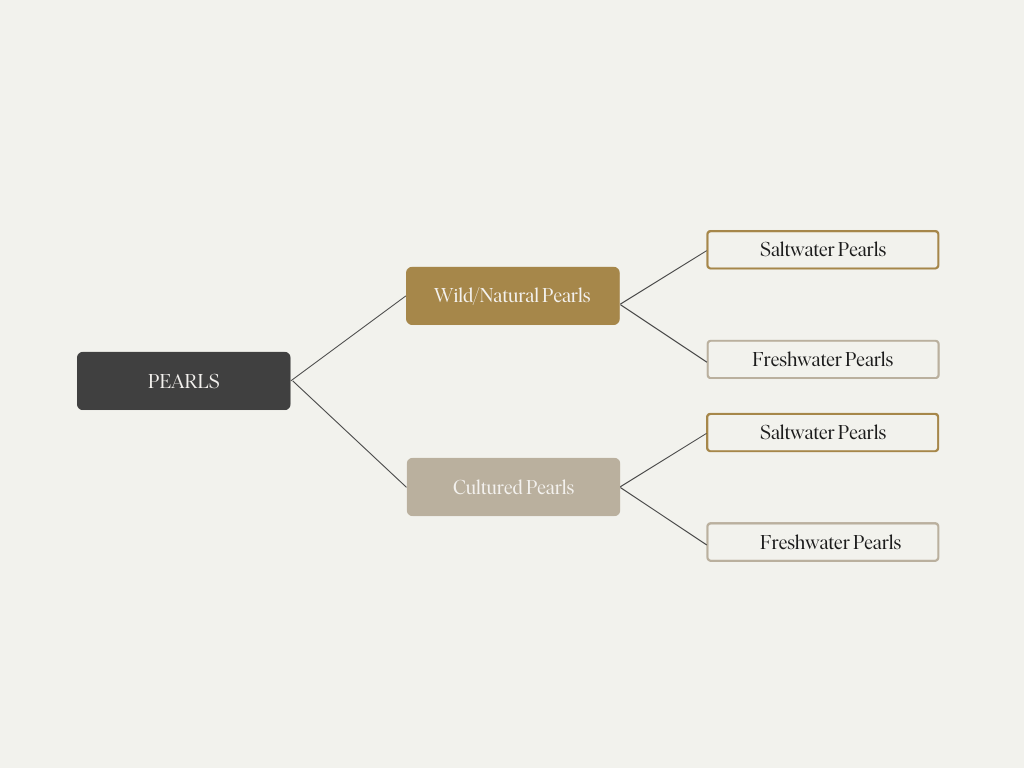

Saltwater Pearls
Natural saltwater pearls are cultivated in oysters in saltwater environments (including seawater). They are prized for their exceptional rarity and high quality. In fact, pearl-producing mollusks were almost hunted to extinction in the 18th and 19th centuries.
Today, these gems are extremely rare. Only about one in every 5,000 to 10,000 oysters produces a natural pearl of noteworthy size and quality. This rarity is reflected in their market value. Price per carat of wild saltwater pearls tends to soar at auctions from 10 to 20 times the price of their cultured counterparts.
The organic formation process within oysters takes several years for wild saltwater pearls. This thereby contributes to the exclusivity of these pearls.
Conversely, cultured saltwater pearls (which are cultivated with human intervention), are more available in greater supply. They are therefore marketed at a fraction of the price of wild pearls, albeit they retain their high quality.
Notable Features of Saltwater Pearls

Freshwater Pearls
Freshwater pearls are grown within freshwater mussels that are typically found in freshwater rivers, lakes, or streams.
Similar to wild saltwater pearls, wild freshwater pearls are incredibly rare.
Though, whether they are wild or cultured, freshwater pearls take significantly less time to form than their saltwater counterparts.
This means cultured freshwater pearls stand as the most prevalent choice in today’s market due to their accessibility and affordability. Their abundance is attributed to innovative cultivation techniques that involve inserting multiple irritants at once into freshwater mussels, prompting the formation of pearls.
Notable Features of Freshwater Pearls

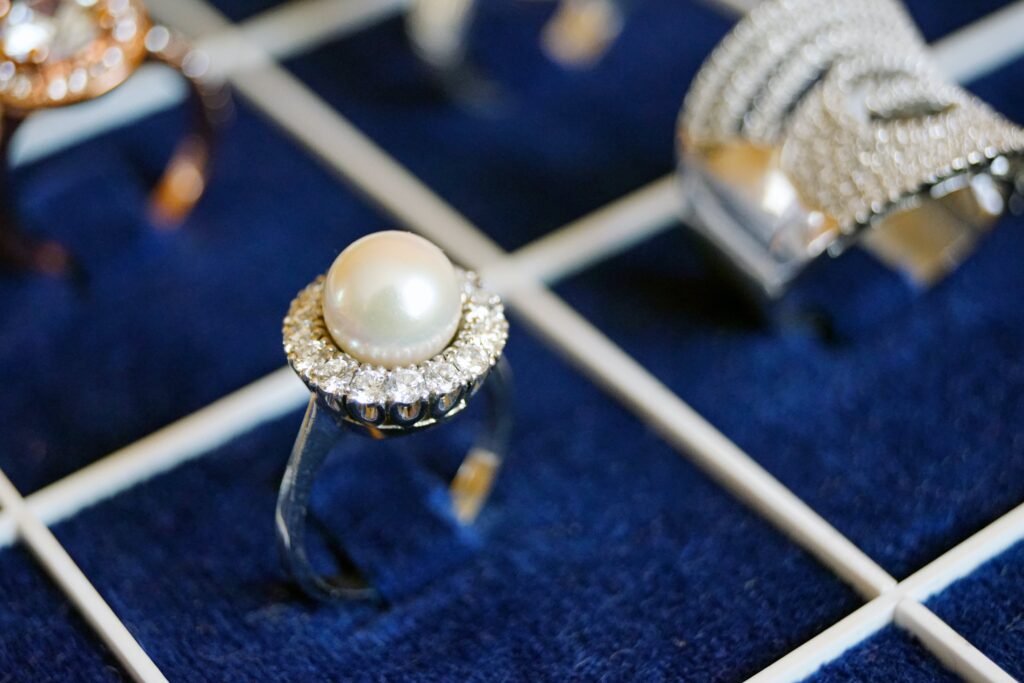
Shopping Freshwater Pearls
Whilst exploring how to buy pearl jewelry one will inevitably encounter the ubiquitous term “freshwater pearls.”
Wild freshwater pearls are incredibly rare. Hence, the vast majority of freshwater pearls available in their saturated market are cultured. They are widely available at much less expensive prices (compared to saltwater pearls) due to their high supply in the global pearl market.
Beyond the efficient, low-cost production model of freshwater pearls, cheap pearls may cost less due to lower quality supplies with low lustre, thin nacre, low matching, or may have non-uniform shapes.
To understand how to navigate the modern freshwater pearl market, let us first understand into the important historical context between Japanese and Chinese freshwater pearls, their main types, and where to source them.
Japanese vs. Chinese Freshwater (Cultured) Pearls
Japanese Freshwater Pearls
- These pearls have an intriguing history dating back centuries. Japanese pearl farmers pioneered freshwater pearl cultivation in the early 20th century. People highly prize Biwa pearls from Lake Biwa and Kasumi pearls from Lake Kasumi-ga-Ura for their rarity and distinctive beauty. For example, Kasumi pearls are known for their metallic luster and a range of natural colors, including pink, lavender, and gold. Each pearl is unique, with an irregular shape and variable surface texture.
- However, due to environmental challenges and over-harvesting, the Japanese freshwater pearl industry declined over the years. They often command higher prices due to their limited production and quality.
- Japanese pearls often showcase pastel hues and slightly irregular shapes due to the conditions in Lake Biwa.
- However, other modern Japanese pearl types have emerged, including Edison and Kasumi pearls as described below.
Chinese Freshwater Pearls
- In contrast, China emerged as a dominant player in the freshwater pearl market. Chinese pearl farmers embraced innovative techniques and cultivated pearls in a variety of freshwater environments. This shift led to the rise of Chinese freshwater pearls, which have become renowned for their diversity and affordability.
- Chinese freshwater pearls, on the other hand, can display a wide range of colours and shapes, reflecting the diversity of their cultivation environments, such as rivers and ponds.
- Edison pearls are another modern Japanese freshwater pearl more widely available than Biwa pearls. Though people now more commonly associate them with Chinese production, Edison pearls stand out for their large sizes, round shapes, and vibrant colours. They often showcase high lustre and smooth surfaces.
The variations in nacre quality and surface characteristics are shaped by the distinct ecosystems and water quality in each region. These collectively contribute to the unique appeal of freshwater cultured pearls from Japan and China.

Sourcing Quality, Authentic Freshwater Pearls
In learning how to buy pearl jewelry you must remember: only 1-2 pearls out of every 100 freshwater cultured pearls meet the gem-quality industry standards that qualify for fine jewelry.
Cultured pearls are more accessible, accounting for a significant percentage of the world’s pearl production. Farmers cultivate 99.99% of all cultured freshwater pearls in China’s freshwater lakes and man-made aquaculture farms.
Due to their high accessibility in the pearl market and lower price ranges (from $30 and upwards), consumers must be wary when assessing the quality of freshwater cultured pearls.
To reduce your risk as a consumer, source cultured freshwater pearls from trusted pearl specialists, brands and reputable jewellers (that sell reputable pearl brands) for consistent high quality pearl jewelry.

How to Assess Pearl Jewelry Quality
The ‘unit base price’ in pearl jewelry represents the value of a pearl, which is important in knowing how to buy pearl jewelry. The Gemological Institute of America (GIA), a nonprofit organization founded in 1931, established the 7 Pearl Value Factors™ framework to assess pearl quality based on various factors.
These factors encompass size, shape, colour, lustre, surface quality, nacre quality, and matching in determining the worth and desirability of pearls in the market.
The vision of the GIA as a standardised grading system was to protect jewelry buyers through providing transparent universal standards to assess gemstone quality. The institution aids consumers in making informed choices whilst empowering jewellers and retailers to accurately represent the value of pearls they offer, thus contributing to the overall integrity of the pearl trade.
Let’s explore each factor used to assess pearl quality.
Lustre
One of the most significant and desirable attributes of a high-quality pearl is high lustre. GIA Pearl Grading for lustre ranges from excellent, good, fair, or poor.
Low lustre refers to a dull, hazy or almost chalky reflection that appears dull or diffused on the pearl’s surface.
High lustre comprises three main components of i) brilliance, ii) inner luminosity, and iii) the measurement of the rate of reflected light. All three factors are essential to evaluate pearl quality and value.
COMPONENTS OF LUSTRE
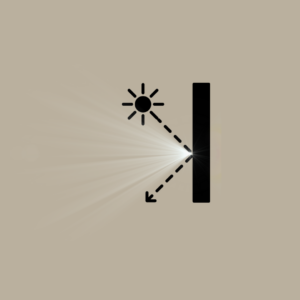
The smoother and more even the surface of the pearl, the better it can reflect light sharply at an equal angle to which it hit the surface. This results in high brilliance. This process is akin to the reflection of light off a mirror, where a smooth, polished surface ensures a sharp reflection.
For example, Akoya pearls showcase great brilliance due to their spherical symmetry and consistently deposited nacre. Light dances uniformly across their surfaces, reflecting at equal angles. In contrast, the irregular contours of baroque pearls hinder this equilibrium, causing light rays to scatter and result in a softer glow and diminished brilliance.

Microscopic crystals in the nacre layers of pearls disperse and refract light. This induces an interplay of refracted, reflected, and diffused light in different directions as it passes through the nacre layers that each have a different refractive index. The end result of these optical interactions is an illusion of depth or inner glow. The pearl appears to hold an alluring, ethereal light source within it.
For example, the luminous inner glow of South Sea pearls stems from the interference phenomenon in the aragonite crystals’ layered structure within the nacre. The 3D, hexagonal close-packed arrangement causes incoming light to refract and reflect, resulting in constructive and destructive interference. This interplay produces a captivating iridescent ‘inner’ glow.

When electrons on the surface of the pearl reflect light rays back at the same frequency as when the light initially hit the surface, it results in a phenomenon akin to metallic bonding. When the frequency (colour) of the reflected light matches the incident light, it leads to constructive interference, enhancing the shininess and sheen of the pearl’s surface.
High quality pearls often reflect objects sharply in an almost mirror-like manner. However, the degree of lustre is subject to the genetics of the particular oyster in which a pearl grows. Not all oyster species are able to secrete nacre in perfectly even patterns within a pearl, for example. This may result in a lower inner glow, lower brilliance and indicate variations in the surface’s reflective properties, which may overall impact perceived pearl quality.
Nacre Quality
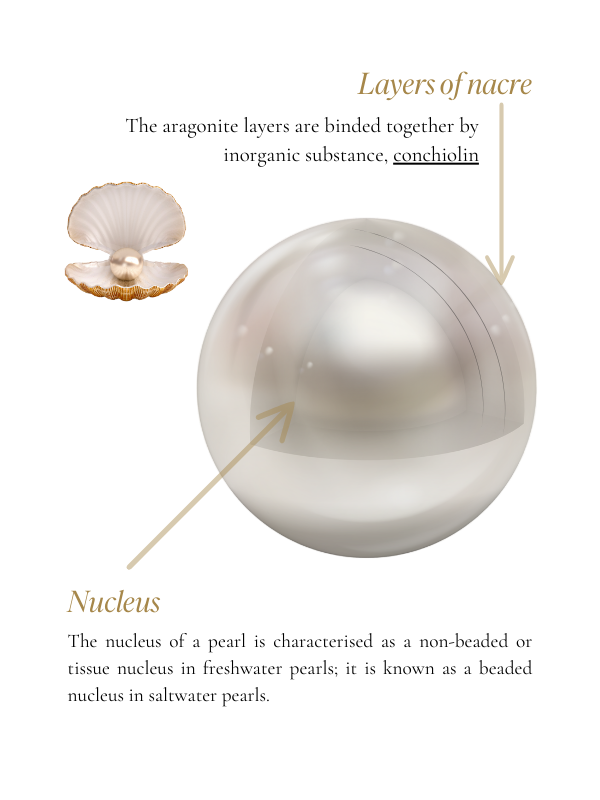
The ‘nacre’ refers to the iridescent, organic material produced by molluscs in layers when cultivating a pearl. Nacre consists of a crystalline form of the calcium carbonate mineral aragonite. When an irritant enters the soft tissue of an oyster or mollusk, it secretes layers of aragonite. Over time, these layers build up to form nacre, or mother-of-pearl, and eventually the pearl itself. A strong protein called conchiolin binds these layers together.
Nacre thickness, ranging from 0.1mm to over 2mm, directly impacts resilience and sheen. It allows for more intricate interactions of light within the layers, leading to a higher degree of constructive interference. Greater nacre thickness enhances pearl quality and lustre.
Thick nacre layers also indicate increased durability, as they suggest a longer cultivation period and meticulous care during growth. Conversely, sub-optimal environmental conditions, such as fluctuations in water temperature and quality, or inadequate availability of nutrients, can all impact nacre quality. Lack of nutrients can prevent conchiolin from adequately binding the aragonite crystals into a precise, resilient structure. This can lead to irregularities in the layers of aragonite, diminishing the even reflection of light and reducing surface sheen in the pearl.
Hence, cultured pearls grown in a controlled environment are more likely to have higher nacre quality. High-quality nacre also features a smooth surface, a high lustre, and minimal imperfections.
However, it’s worth noting that some pearl types, like Akoya often have thinner nacre layers due to the genetics of the oyster species cultivated in. In this case, the Akoya pearl’s characteristic high lustre compensates for its thinner nacre, rendering them exceptionally valuable.
Surface Quality

Surface quality refers to the condition of the pearl’s outer layer. It encompasses any imperfections or flaws that may be present on the pearl’s surface. These flaws can manifest as blemishes, spots, pits, or irregularities that are often the result of natural processes or handling during cultivation.
To spot pearls with high surface quality, closely examine the pearl’s surface under good lighting. High-quality pearls will exhibit a smooth, clean, and lustrous surface with minimal blemishes, contributing to their overall visual appeal and value.
Nearly all pearls may exhibit surface flaws to some extent. However, the impact of these flaws can vary based on the mollusk type or the environment in which the pearl grows, as outlined below.
Saltwater vs. Freshwater vs. (All) Cultured Pearls
Pearl Size
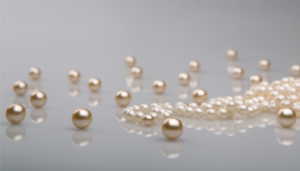
The size of pearls is measured by diameter length in millimetres (mm). Pearl size can generally range from 2 to 20mm. The average size of a pearl depends on its type, though saltwater varieties tend to be larger.
Suppliers price larger pearls at a premium. Large pearls are more rare in nature, and often require specific, pristine conditions for culturing.
Larger pearls also tend to be higher quality. A large size provides more surface area and extended growth periods, leading to more substantial and well-developed nacre. This results in a smoother surface, enhanced sheen, and increased value.
However, depending on the specific pearl type and the mollusk in which it grows, smaller pearls can still be high quality.
For example, the size of Akoya pearls ranges from 3 to 9mm. They tend to be small because the Pinctada fucata martensii oyster that produces Akoya pearls is the smallest pearl-producing oyster. However, Akoya are one of the most valuable saltwater pearls due to other factors undermentioned that contribute to their high quality.
Pearl Shape
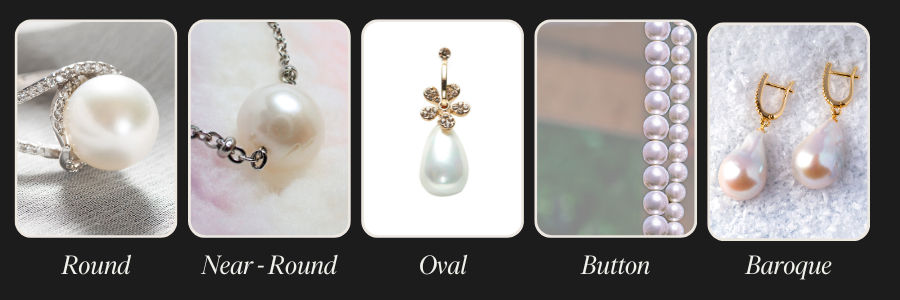
The type of pearl and the environmental conditions during its development often influence its shape. For example, farmers intentionally nucleate cultured pearls to encourage a more symmetrical and round shape, particularly for Akoya pearls, due to the strong demand for perfectly round pearls.
However, pearls can naturally develop various shapes, including round, near-round, oval, button, and baroque. Each shape has its unique charm and character, influenced by the nucleation process, the shape and size of the irritant, and the mollusk’s natural tendencies during pearl formation.
For instance:
- An oval nucleus or an ovoid irritant can lead to the formation of oval pearls.
- Button pearls often result from the mollusk’s response to a flat or irregular irritant.
- Baroque pearls form when the mollusk’s response to the irritant is irregular, resulting in unique and organic shapes.
Ultimately, the choice of pearl shape comes down to personal preference and the design of the jewelry piece. People traditionally consider round pearls the most valuable due to their classic elegance and universal appeal.
Colour
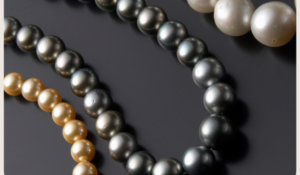
The colour of pearls is a captivating aspect of their beauty and often a crucial consideration when assessing their quality.
Classic white pearls evoke purity and elegance, making them among the most sought-after in the jewelry world. As a result, jewellers typically price them at a premium. In alignment with industry standards, the purest and most brilliant white pearls command the highest prices due to their timeless appeal.
It’s essential to note that most natural pearls aren’t perfectly white; they often display subtle off-white, cream, or champagne hues. Trace elements and pigments in the mollusk’s environment affect the nacre layers’ coloration, leading to these subtle variations in hue.
In contrast, the world of pearls offers a breathtaking array of colours beyond white. Subtypes such as South Sea pearls, Sea of Cortez pearls, and black Tahitian pearls are celebrated for their unique and mesmerising hues, ranging from lustrous gold and silver to deep, iridescent black. These distinctive colours, accompanied by enchanting undertones, add depth and character to the pearls, making them highly favoured for their exceptional beauty and individuality.
Matching
The concept of “matching” pearls holds great significance for items like pearl necklaces and earrings.
Matching refers to the degree of uniformity and harmony in the size, shape, colour, lustre, and surface quality of the pearls used in a single piece of jewelry. A well-matched strand of pearls, for example, will exhibit consistent characteristics across all pearls, creating a harmonious appearance that impacts overall value.
Achieving precise matches in all these aspects is rare and often reserved for high-end jewelry. Factors affecting matching include the type of pearl, the source, the quality of cultivation, and the level of human intervention. Farmers can intentionally nucleate and sort cultured pearls to achieve better uniformity, making them more likely to exhibit a higher degree of matching. However, unique and artistic designs may embrace slight variations in pearls, prioritising individuality over strict matching.

What are the best quality pearl types?
Each pearl type bears the imprint of its origin, a testament to the environment’s influence on their unique qualities.
Let us take a deep dive to the finest saltwater pearls: from the waters of Japan fostering high nacre and exceptional lustre in classic Akoya and Hadanama Akoya pearls, to the sun-kissed expanses of the South Seas yielding pearls of extraordinary size and radiance. We will also navigate the striking Sea of Cortez pearls and Tahitian pearls from French Polynesia.
We will also compare the characteristics of Japanese and Chinese freshwater pearls and pearl farms that have helped shape the global freshwater pearl industry.

Pearl Type I: Akoya Pearls
People revere Akoya pearls for their timeless beauty and classic elegance.
Farmers primarily culture them within the Pinctada fucata oyster. This oyster yielded the world’s first spherical marine cultured pearls by the Japanese in 1907. Today, they remain the most abundant saltwater pearl, partly due to their characteristic exceptional lustre.
Japan is the largest producer of pearl farms, followed by China and Vietnam.
Chinese vs. Japanese Akoya
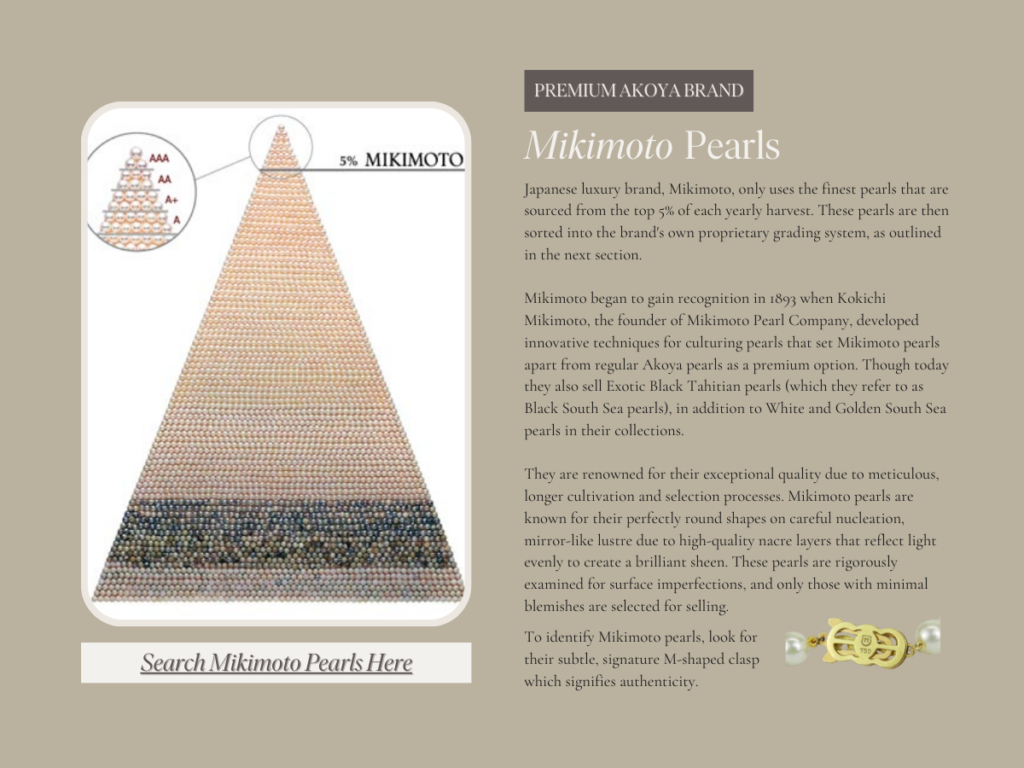
Hanadama Akoya Pearls
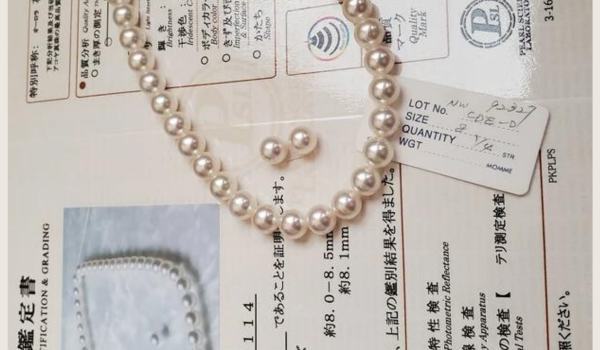
Hanadama pearls are the most premium category within Akoya pearls through rigorous independent certification from the Pearl Science Laboratory of Tokyo, Japan. They showcase some of the thickest nacre layers amongst Akoya pearls due to extended cultivation periods, allowing for the deposition of more nacre.
This thick, durable nacre creates mesmerising lustre and an enchanting shimmering effect known as the “Aurora effect” or “Orient.” Intricate interference patterns form as the light waves pass through the more consistently thick and superior nacre layers of Hadamana pearls. This produces a great range of vibrant and iridescent colours seen on the pearl’s surface.
Japanese Pearl Grading System
Which grade of Akoya pearl should I consider?
For an individual seeking a very high-quality pearl that offers an excellent balance of quality and price, The Redefined Feminine recommends at least AAA (Excellent) pearls (and above) as a solid choice.
AAA pearls provide exceptional lustre, a mostly round shape, and fewer imperfections, making them a popular and accessible option in the gemstone market.
Akoya pearls graded AAA (Excellent) can represent a potential investment, often priced at at least a few hundred dollars. Though, they also serve as a valuable enhancement to your everyday attire, as elegance is often found in the details. When incorporated as staple jewelry pieces, the extraordinary lustre of AAA (Excellent) pearls (and above) shines forth, elevating your daily look and style to new heights.
However, it’s essential to consider personal preferences and budget constraints when selecting the grade that best suits your needs and style.

Pearl Type II: South Sea Pearls
South Sea pearls are a symbol of luxury. They are prized for their rarity, high lustre, large size, and the meticulous process required for their cultivation.
They are among the largest and most valuable pearls globally. The first successful attempts to culture South Sea pearls occurred in Australia in the 1950s, marking a significant milestone in pearl farming.
South Sea pearls are primarily cultivated within the Pinctada maxima oyster. They are often referred to as the “Silver-Lipped” or “Gold-Lipped” oyster, depending on the pearl variety.
Key Features of South Sea Pearls
| Size | One of the most distinctive characteristics of South Sea pearls is their size, ranging from 10mm to 20mm. The P. maxima oyster is the largest pearl-producing oyster genus. In turn, it is capable of producing significantly larger pearls than other oyster species due to greater space available for pearl formation. |
| Nacre Thickness | South Sea pearls, both White/Silver and Golden varieties, are known for having some of the thickest nacre layers among cultured saltwater pearls of 2.0-3.0mm. This thickness is achieved through a longer growth period during which the oyster continuously deposits layers of nacre onto the nucleus. The favourable climate conditions in the South Pacific, where these oysters are cultivated, stimulate their metabolism and secretion of crystalline nacre. |
| Lustre and Luminosity | The P. maxima oyster secretes a very luminous and iridescent nacre, which contributes to the captivating lustre of South Sea pearls. – White/Silver South Sea Pearls exhibit a classic, bright lustre, creating a soft, reflective glow on the surface. – Golden South Sea Pearls are renowned for a warm, rich lustre that adds a distinctive and luxurious quality. |
| Shape: Perfectly Round | Perfectly round South Sea pearls comprise less than 5% of each annual harvest. Due to their rarity and symmetry, they are amongst the most valuable and command premium prices in the market. This ranges from $1,000 to $10,000 or more per pearl, depending on size, lustre, surface quality, and overall quality. |
| Shape: Near-Round | Around 20% of each harvest exhibit a “near-round” shape but may have slight irregularities. While not as rare as their perfectly round counterparts, near-round South Sea pearls are still highly desirable and fall into the upper price range of $500 to $5,000 per pearl due to their attractive shape and overall quality. |
| Shape: Symmetrical Drop-Shapes | About 50% of South Sea pearls feature symmetrical drop or baroque shapes. These pearls have unique and organic shapes, which can include drops, ovals, and other irregular forms. While they are not as rare as round or near-round pearls, they still offer exceptional lustre and size. Pearls in this category can vary in price from $300 to $3,000 or more per pearl, depending on their size, lustre, surface quality etc. |
Types of South Sea Pearls

White/Silver South Sea Pearls
Cultivated primarily along the Northern Australian coasts, White/Silver South Sea pearls are celebrated for their ethereal luminance and silvery sheen.
Due to genetic variations and environmental conditions, their colour palette ranges from radiant white to enchanting silver, imparting a timeless elegance to jewelry pieces. These pearls owe their brilliance to the tranquil waters of their cultivation region, allowing for steady nutrient sources and consistent pearl development.
White/Silver South Sea Pearls generally have a slightly wider price range than Golden South Sea Pearls, but the price difference can vary based on factors like colour intensity. These pearls may be priced at $500 to $10,000 or more per pearl, depending on size, shape, lustre, surface quality, and colour.
Golden South Sea Pearls
Cultured in the Philippines, Golden South Sea pearls are coveted for their resplendent golden hues that span from delicate shades to deep, captivating copper tones. The rarity and value of Golden South Sea pearls increase with the intensity of their golden colour, making them highly sought after. Their cultivation environment benefits from high volumes of tidal variations, ensuring a continuous supply of nutrients that contribute to the lustrous allure of the Golden South Sea pearl.
Prices of Golden South Sea Pearls can range from $700 to $15,000 or more per pearl, with darker, more intense golden hues commanding higher prices.
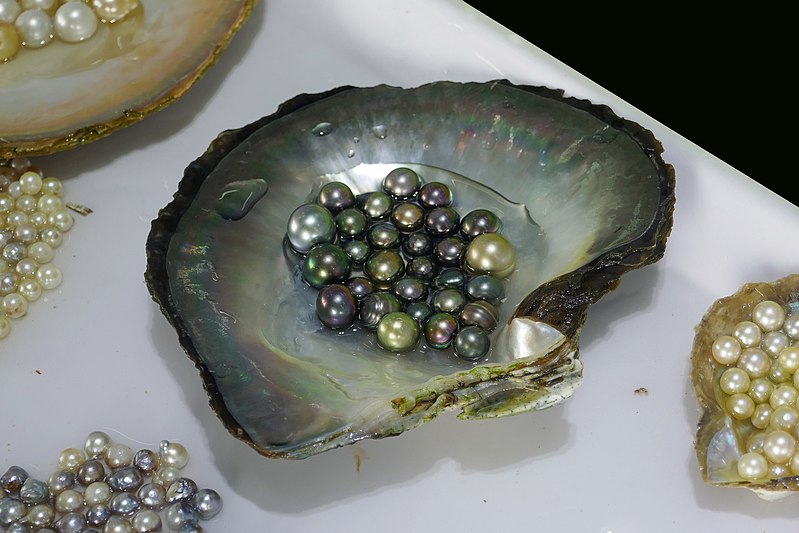
Pearl Type III: Tahitian ‘Black’ Pearls
People often refer to Tahitian “black” pearls as the “Queen of Pearls.” Farmers cultivate these pearls within the Pinctada margaritifera saltwater oyster, found in the pristine waters of French Polynesia and the Cook Islands. Their alluring dark, iridescent hues have earned Tahitian pearls their rightful place among the world’s most coveted gems.
To qualify for export, these pearls must boast a minimum nacre depth of 0.8mm, ensuring their durability and quality.
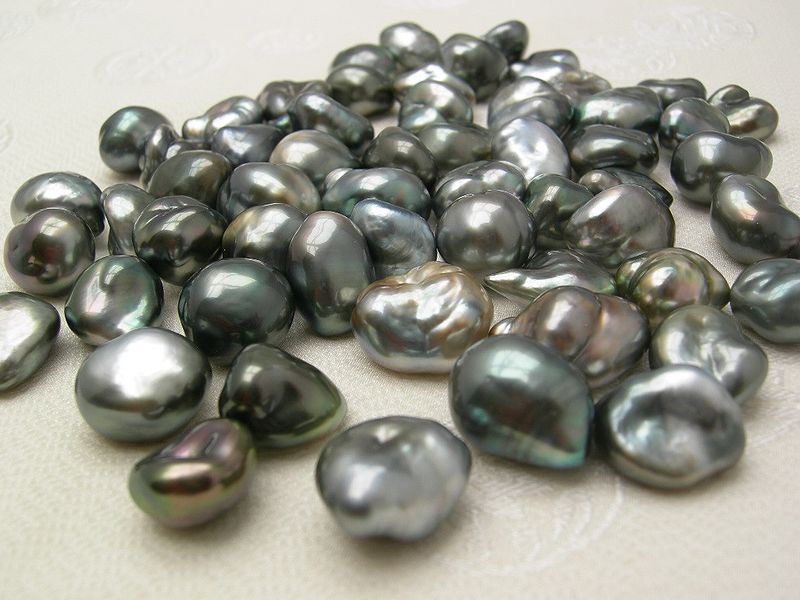
Notable Features of Tahitian ‘Black’ Saltwater Pearls

Pearl Type IV: Sea of Cortez Pearls
People also know Sea of Cortez pearls as Cortez Pearls. These are amongst the world’s most rare and captivating cultured pearls from saltwater varieties due to the incredible range of rich hues they are available in.
These exquisite gems are the product of the ‘rainbow-lipped’ Pteria sterna oyster, an oyster species exclusive to the waters of Baja, Mexico, and northern Peru.
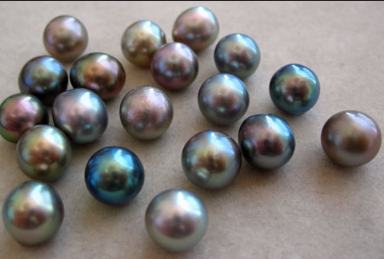
Notable Features of Sea of Cortez Pearls

Sourcing Quality, Authentic Saltwater Pearls
Always source pearl jewelry from trusted pearl specialists, brands and reputable jewellers. Focus on those with physical stores where you may speak to in-house specialists to reduce your risk as a consumer.
When it comes to high-quality pearl jewelry, several prestigious brands stand out. This is due to their commitment to excellence, sustainable practices, and exceptional craftsmanship. The brands listed below offer a blend of tradition, innovation, and environmental responsibility, making them excellent choices for discerning buyers seeking the finest pearls.
Yoko London
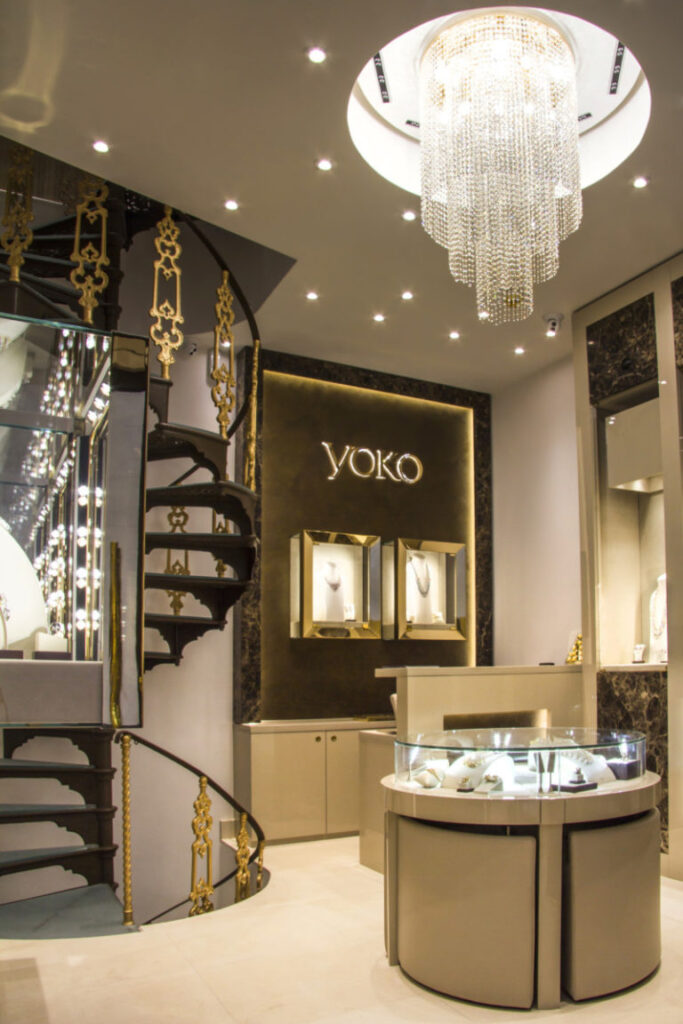
Yoko London, founded in 1973, is a family-owned brand that has become a symbol of luxury and innovation in the pearl industry. With a rich history spanning over four decades, the brand has established itself as a leading name in high-quality pearl jewelry, blending traditional craftsmanship with contemporary design.
FAMILY-OWNED AND OPERATED
The Hakimian family established Yoko London, bringing their extensive knowledge and passion for pearls to the forefront of the jewelry market. They quickly gained a reputation for their innovative approach and dedication to quality. Over the years, the family has continued to operate Yoko London, ensuring they uphold their original values and commitment to excellence.
Yoko London sources its pearls from the finest farms across the globe, including regions known for their superior pearl production such as Japan, French Polynesia, and Australia. The brand works closely with these farms to ensure that each pearl meets their stringent standards for quality, colour, and lustre.
Collections
Yoko London offers an extensive collection of pearl jewelry, featuring South Sea, Tahitian, Akoya, and freshwater pearls. Notable collections include the “Classic Collection,” which emphasises timeless elegance, whilst the “Trend Collection,” known for its modern and bold designs.
Yoko London’s jewelry ranges from moderately priced pieces for everyday wear to high-end, luxury items. Entry-level pieces can start at a few hundred dollars, while more elaborate and rare designs can reach into the tens of thousands of dollars, reflecting the quality and rarity of the pearls used.
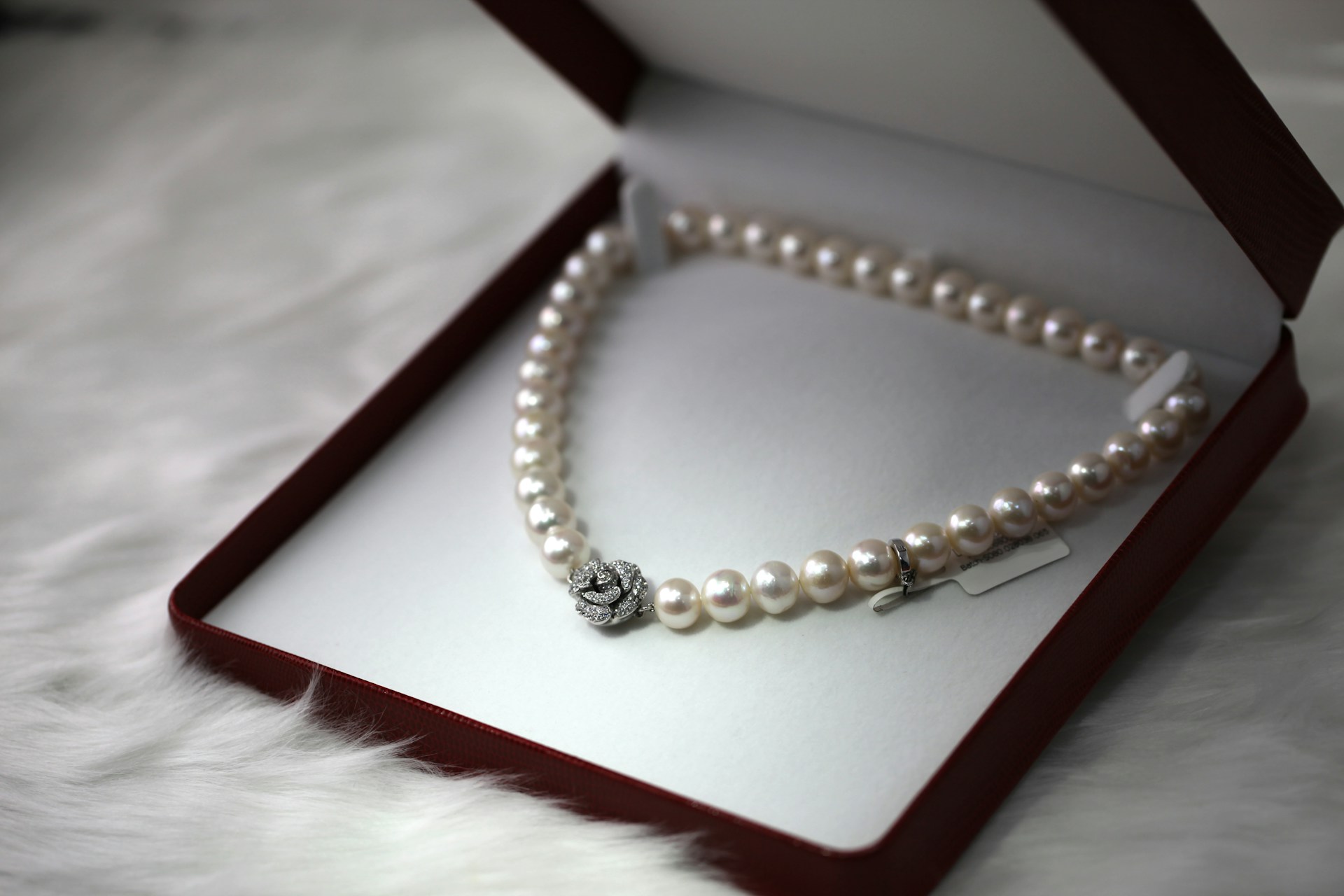

Leave A Comment